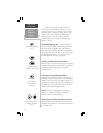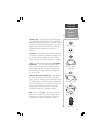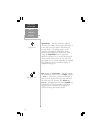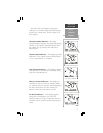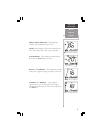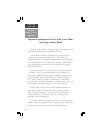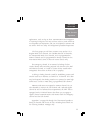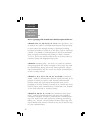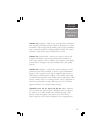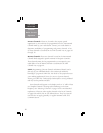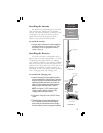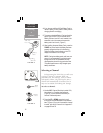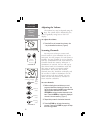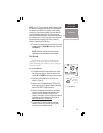
12
GETTING
STARTED
Here is a grouping of the channels and a brief description of their use.
Channels 5,12, 14, 20, 65, 66, 73, 74,77: Port Operations - Can
be used by any vessel for communications between ships and ship-
to-coast stations for messages relating to operational handling,
movement and safety of vessels in or near ports, locks or waterways.
Channel 77 is limited to communications to and from commercial
pilots in regard to movement and docking of vessels. Channels
11,12, 13, and 14 are used for traffic service on the Great Lakes, St.
Lawrence Seaway and designated major ports.
Channel 6: Intership Safety - For use by any vessel for communi-
cating navigational and weather warnings to other ships. Also used
for communicating during search and rescue operations. Ship-to-
ship communications only. Do not use for routine communications
as this is a safety channel.
Channels 7, 8, 9, 10, 11, 18, 19, 67, 79, 80, 88: Commercial
Vessels - Used for communication between vessels pertaining to the
purpose for which the vessel is used. Limited communications
between vessels and coast stations. Recreational boats are not
permitted to use these channels. Channels 8, 67, and 88 may not be
used for ship-to-coast communications. Channel 88 is not available
on the Great Lakes and St. Lawrence Seaway.
Channels 9, 68, 69, 71, 72, 78: non-Commercial (Boat Opera-
tions) - Used by recreational boaters and others not engaged in
commercial transport. Provides a communication channel pertain-
ing to the needs of the vessel (maneuvers, berthing, provisioning,
fueling, etc.). Used as a second receiver between ship-to-ship and
ship-to-limited coast stations. Channel 72 may not be used for ship-
to-coast communications.
Maritime
Radio Services
Operation



